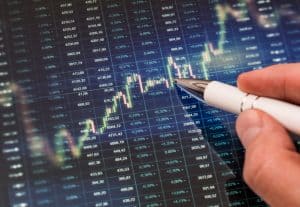 The depth and breadth of innovation around algos in the FX space is a source of both simplicity and complexity for the buy-side, although some are not convinced that the industry is going in the right direction, according to panellists at this year’s TradeTech FX Europe conference.
The depth and breadth of innovation around algos in the FX space is a source of both simplicity and complexity for the buy-side, although some are not convinced that the industry is going in the right direction, according to panellists at this year’s TradeTech FX Europe conference.
A discussion on the use of algos in FX markets featured both buy- and sell-side institutions and there were numerous opinions as to the progress the industry is making, particularly where the issue of access to liquidity via algorithmic trading was concerned.
“There are almost two separate threads that sound like they are contradictory; are algos getting smarter and more complex, or are they getting simpler and more accessible? Our view is that it is both and those two things are not incompatible,” said Allan Guild, global head of alternative execution services at HSBC.
“It’s about making sure that our clients understand the algos and the strategies, in terms of the inputs and how they are choosing to execute, which can be straightforward. The complexity and the smart comes into the execution of the individual child orders.”
Meanwhile, Ralf Donner, global head of client FX algo execution at Goldman Sachs, said that while the accessibility of liquidity and the management of liquidity providers should be considered important, it represents just one side of the algo innovation debate.
“The other side of the equation is actual product innovation, which has taken a step back in recent years, but it’s coming back to the fore, and this is concerning things like how do you executive portfolios effectively, how can you provide tools to options traders to executive that are useful for them, how do executive things that in past couldn’t be done on algos such as NDFs or outright forwards, maybe one day swaps; there are is a lot of product innovation that is actually coming online now or will be soon,” said Donner. “Maybe then the liquidity side of the argument will reach a certain maturity and we will be able to put it behind us.”
When buy-side firms choose to use algos to execute orders, they take on the risk of those orders themselves, and using algos that they perhaps are not familiar with or are not suitable for a particular strategy means that some firms are hesitant to use technology from outside sources to achieve the best execution outcome.
“Although we keep trying sell-side algos, because there is nothing more I like than to just retire a technology stack and outsource it so that I can take that development resource and apply it to alpha generation, we keep going back to our own algos,” said Hasan Amjad, head of algorithmic trading at GAM Systematic Cantab.
“We may be partially biased towards our own technology, but also possibly because our own algos tend to do much better, perhaps because we are tapping into the internal order books of all these liquidity providers, which a single provider simply doesn’t have access to.”
There is also the issue of the buy-side fully handing over control of execution orders to algos, with many traders still keen to take control of orders “mid-flight”, although this does run the risk of muddying the data that is then used to analyse trades after completion.
“It is, after all, empowering to be able to change your algo mid-execution and make adjustments as you see market conditions either deteriorating or improving, and it particularly allows, because it’s at the child order level so you have a very clear view of the breakdown of liquidity, the scope for internalisation,” said Donner.
“For post-trade analysis there is no doubt that any tinkering around with algos during execution removes that clean picture, but realistically we can’t experiment and deploy laboratory conditions for algos, that’s not going to work.”
APG’s Patil said that it is now “the nature of modern algos” that traders can step in during execution to make changes if required and that systems, in some cases, are advanced enough where any changes made can be tagged and post-trade analysis will factor in such elements.
Another issue of contention for the buy-side panellists was the lack of standardisation among third-party TCA providers, with data and analytics often supplied in disparate formats. Amjad said that the buy-side require more data from the sell-side, particularly firms that run systematic strategies, but receiving TCA reports and graphs in PDFs from various providers only caused more problems than they solved.